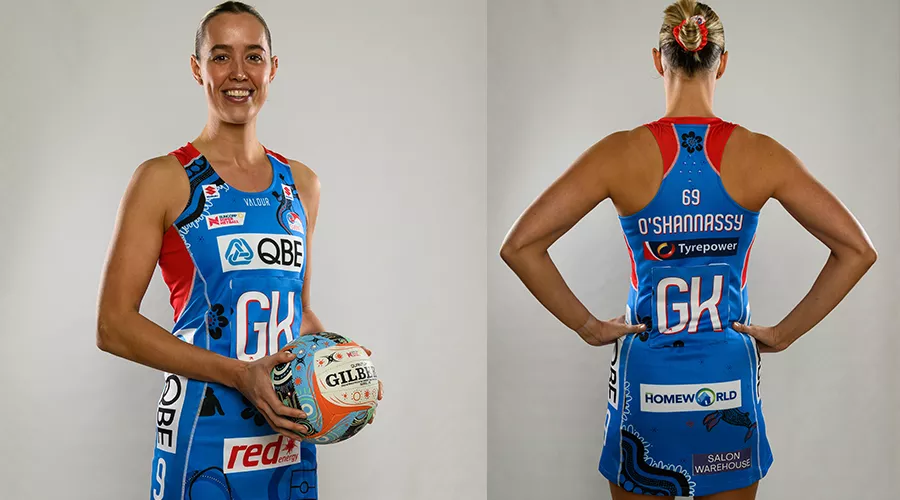The NSW Swifts are delighted to unveil the Club’s 2024 First Nations Dress which has once again been designed by proud Wongaibon woman Tarsha Hawley.
A former QBE Swifts Academy athlete and Netball NSW Premier League player, 2024 marks the fourth season that Hawley has been commissioned to design the Indigenous uniform.
The Swifts will wear the dress for the first time in Saturday night’s Round 7 Suncorp Super Netball clash against the Thunderbirds in Adeliade, which also doubles as a Grand Final rematch.
Historically, First Nations Rounds have been delivered over consecutive weeks to align with National Reconciliation Week (27 May to 3 June).
However, in 2024, they will align with two of the largest weeks in the First Nations Calendar: NRW and NAIDOC Week (7-14 July 2024):
It means the Swifts will host their own First Nations Round at Ken Rosewall Arena in Round 13, which will also be against the Thunderbirds.
Swifts First Nations Dress designer Tarsha Hawley.“I’m very privileged to be able to design the NSW Swifts’ Indigenous Dress for 2024,” Hawley said.
“I am a very passionate and proud Wongaibon woman, who hopes to inspire and teach others about my culture.
“My painting is a representation of ‘many mobs, one community.’”
2024 DRESS STORY
Depicted to the right of the painting I’ve placed the Aboriginal flag. As an Aboriginal woman I feel a sense of pride when looking at the Aboriginal flag and it’s now able to be used freely, becoming free of copyright as of 22 January 2022. Flags unite people and we as Aboriginal people want the flag to be treated like every other recognised, official flag in the world.
Surrounding the flag on the edge of the wavy lines is a representation of people which symbolises women. I’ve painted 105 women to represent each player who’s played for the Swifts up until before the start of the 2024 season.
The connection of one community really shows within the Swifts environment and it’s important to keep recognising this. The wavy lines symbolise the hurdles we all come across: nothing is ever straight forward or given. It’s hard work, and hard work beats talent every day of the week. Every single bend is a hurdle, and the footprints show that journey we are on as athletes and as Aboriginal people trying to be recognised.
I’ve used the goanna as it’s known as the protector: it gives strength both inner and outer. The goanna reminds us we are strong, not only when we protect and defend ourself but also when we show the courage to face our own emotions and share them with others in our communities.
The whale connects animals, people and places together. Surrounding the goanna and whale are lots of different communities, which the man and women protect.
